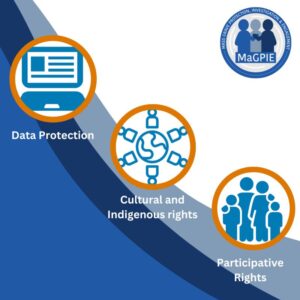In its ambition to develop a pioneering and comprehensive human rights framework for engagement with mass graves, MaGPIE has three overarching objectives:
- To produce a global quantitative and qualitative assessment of the scale of the phenomena that are mass graves;
- To remedy associated blindspots within the existing human rights framework; and
- To create policies that innovate, consolidate and implement a coherent human rights approach to mass grave engagement.
MAGPIE addresses three pressing issues, structured into the following three Pillars:
In blue: The scale and nature of mass graves worldwide is presently unknown, Pillar One will therefore identify and map mass graves across the globe; capture the legal protections afforded by all affected States; examine the quality of forensic investigations of mass graves and analyse the extent to which justice efforts have been realised.
In orange then are our human rights gaps. Here Pillar Two addresses a number of specific areas where insufficient consideration has been given to the fundamental human rights issues and challenges arising as a result of the existence of mass graves.
Thirdly, Pillar Three concerns the indispensable translation of knowledge into policy and practice. The MaGPIE team are world-experts on this subject and are ideally placed to further expand our collaborative policy expertise to mass graves that arise as a result of migration – both on land and via the sea. Finally, MaGPIE will revisit and update the international standard-setting Bournemouth Protocol to reflect new findings and the most up-to-date practice.







